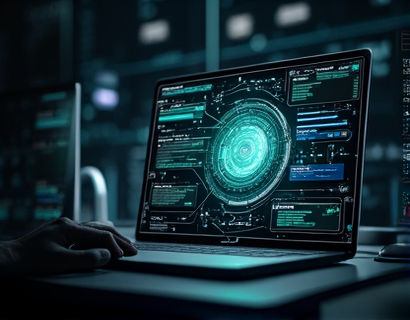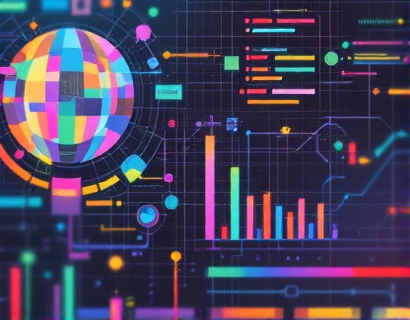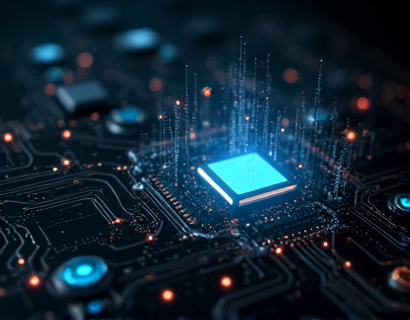Transforming User Experiences: The Synergy of Crypto and AI in Next-Gen Ucosystem Innovations
The intersection of cryptocurrency and artificial intelligence (AI) is giving rise to a new era of digital interactions, fundamentally transforming app ecosystems and redefining user experiences. This convergence is not just a technological advancement but a paradigm shift that promises unprecedented growth and engagement. As we delve into this topic, it's essential to understand the foundational technologies driving this transformation and their practical applications.
Foundations of Cryptocurrency and AI
Cryptocurrency, since its inception with Bitcoin in 2009, has evolved from a niche digital currency to a robust ecosystem encompassing various assets, smart contracts, and decentralized applications (dApps). The underlying blockchain technology ensures transparency, security, and decentralization, making it an ideal foundation for innovative applications.
Artificial intelligence, on the other hand, involves the simulation of human intelligence processes by machines, particularly computer systems. These processes include learning (the acquisition of information and rules for using it), reasoning (using rules to reach approximate or definite conclusions), and self-correction. AI's capabilities range from natural language processing to predictive analytics, making it a powerful tool for enhancing user experiences.
Enhanced Security through Crypto and AI
One of the most significant benefits of combining crypto and AI is the enhancement of security measures. AI algorithms can detect and mitigate fraudulent activities in real-time, a task that would be challenging for traditional security systems. For instance, machine learning models can analyze patterns in transaction data to identify anomalies that indicate potential fraud. This proactive approach not only protects users but also builds trust in the ecosystem.
Moreover, blockchain's inherent security features, such as immutability and cryptographic hashing, provide a robust layer of protection. AI can further fortify these defenses by continuously monitoring the network for vulnerabilities and adapting security protocols accordingly. This synergy ensures that user data and transactions remain secure, a critical factor in fostering user confidence and adoption.
Personalized User Experiences
AI-driven personalization is revolutionizing how users interact with digital platforms. By leveraging machine learning algorithms, systems can analyze vast amounts of user data to create tailored experiences. For example, recommendation engines powered by AI can suggest apps, services, or content based on a user's preferences and behavior, enhancing engagement and satisfaction.
In the context of cryptocurrency, AI can optimize wallet management and transaction processes. Smart wallets can use AI to predict user needs, automate transactions, and provide real-time insights into market trends. This level of personalization not only simplifies the user experience but also makes it more intuitive and efficient.
Decentralized Applications and AI Integration
Decentralized applications (dApps) are at the forefront of the crypto-AI convergence. These applications run on blockchain networks, leveraging smart contracts to automate and secure interactions. AI enhances dApps by providing intelligent automation, predictive analytics, and enhanced user interfaces.
For instance, AI can optimize the performance of dApps by dynamically adjusting resource allocation based on user demand and network conditions. This ensures smooth and efficient operation, even during peak usage times. Additionally, AI-powered chatbots and virtual assistants can provide users with instant support and guidance, further enriching the user experience.
Market Predictions and Trading Insights
The integration of AI in cryptocurrency markets is transforming how users make informed decisions. AI algorithms can analyze vast datasets, including historical price data, news sentiment, and market trends, to generate accurate predictions and insights. This capability is invaluable for traders and investors seeking to maximize returns and minimize risks.
AI-driven trading bots can execute trades based on predefined strategies, operating 24/7 without human intervention. These bots can adapt to changing market conditions, ensuring that users stay ahead of the curve. Moreover, AI can identify emerging trends and opportunities, providing users with a competitive edge in the fast-paced crypto market.
User Interface and Experience Innovations
The user interface (UI) and user experience (UX) of crypto and AI-powered platforms are being reimagined to meet the demands of modern users. AI-driven design tools can create responsive and adaptive interfaces that cater to diverse user needs and preferences. These tools analyze user interactions and feedback to continuously refine and improve the UI/UX.
For example, AI can optimize the layout and navigation of apps to reduce user friction and enhance usability. Voice recognition and natural language processing enable seamless voice-based interactions, making the platform more accessible and user-friendly. This holistic approach to UI/UX design ensures that users have a seamless and enjoyable experience.
Interoperability and Cross-Chain Solutions
Interoperability is a critical aspect of the crypto ecosystem, and AI plays a pivotal role in facilitating seamless interactions between different blockchain networks. AI algorithms can bridge the gap between disparate systems, enabling cross-chain transactions and data sharing. This interoperability not only enhances the functionality of individual platforms but also creates a more connected and cohesive ecosystem.
AI-driven protocols can manage complex transactions across multiple chains, ensuring consistency and reliability. This capability is essential for building a unified digital economy where users can seamlessly interact with various services and assets, regardless of the underlying blockchain technology.
Challenges and Considerations
While the integration of crypto and AI offers numerous benefits, it also presents challenges that must be addressed. One of the primary concerns is the regulatory landscape. As crypto and AI technologies evolve, regulatory bodies are grappling with how to oversee these innovations. Ensuring compliance while fostering innovation requires a balanced and forward-thinking approach.
Another challenge is the technical complexity involved in integrating these advanced technologies. Developers need to possess a deep understanding of both crypto and AI to create robust and secure solutions. Continuous education and collaboration within the developer community are essential to overcome these hurdles.
Future Prospects
The future of crypto and AI is bright, with numerous opportunities for growth and innovation. As technology advances, we can expect even more sophisticated applications that further enhance user experiences. The convergence of these technologies will likely lead to the development of new paradigms in digital interactions, such as decentralized autonomous organizations (DAOs) powered by AI, and more intuitive and secure user interfaces.
Moreover, the increasing adoption of 5G and beyond will facilitate faster and more reliable connections, enabling real-time AI-driven crypto applications. This synergy will not only transform individual apps but also reshape entire industries, from finance to healthcare and beyond.
In conclusion, the fusion of cryptocurrency and AI is driving a revolution in digital interactions, offering unparalleled security, personalization, and innovation. As these technologies continue to evolve, they will play a crucial role in shaping the future of the digital landscape, providing users with enhanced connectivity and unprecedented experiences.










































